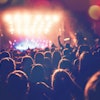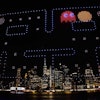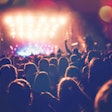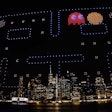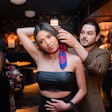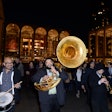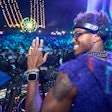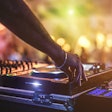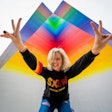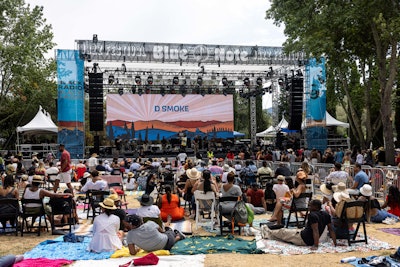
From big-name events like Electric Zoo in New York to smaller, niche gatherings such as Rocklahoma in Pryor, Okla., 55 music festivals (give or take) will take place this September across the U.S. As folks emerge from the pandemic, live, in-person events are returning in full force, prompting a summer (and seasons to come) filled with music festivals new and old.
According to economic development firm AngelouEconomics, Lollapalooza has generated more than $2 billion in revenue for Chicago since its inception in 2010, including $305 million in 2021, while last year’s Austin City Limits Music Festival contributed $369.16 million to the city’s economy.
But it’s not just blockbuster fests that bring in the bucks. The Big Ears Festival in downtown Knoxville, Tenn.—which took place in March and was created and produced by AC Entertainment—gave the city and surrounding region an estimated $36-million financial boost. According to the AngelouEconomics findings, the festival supported the equivalent of 377 full-time jobs and more than $2.6 million in new tax revenue for the city, county, and state.
“Festivals in secondary/tertiary markets provide significant opportunities for artists. These events are critical to the touring ecosystem. They are an essential building block in widening an artist’s fan base, and they provide an economic boost to local economies,” said Shannon Casey, senior vice president of fairs and festivals at Wasserman Music, about the significance of hosting a festival in a smaller market.
While the number of festivals increases, the industry mainstays have seemed to have lost their identities. Artist lineups at events like Coachella, Bonnaroo, and Lollapalooza are almost indistinguishable now. Of course, that’s by design—the more diverse and popular the roster, the broader the appeal, which results in a wider ticket base and potentially more revenue.
"Huge festivals are more impersonal and diffuse by nature and can tend to feel very similar in many aspects, though some stand out in unique ways," said Michael Nash, festival producer for Sound Summit, which will take place at the historic Mountain Theatre, a 4,000-seat natural stone amphitheater located in Mount Tamalpais State Park in Marin County, Calif., on Oct. 22. "Niche fests by contrast give fans a distinct sense of connection and community that creates a special experience." While the Sound Summit festival features an eclectic lineup that's not focused on one specific genre—this year The War on Drugs headlines—the fact that the fest only happens for one day in a unique venue adds a sense of exclusivity and intimacy.
"I think, as do a number of my friends and colleagues, that there are too many festivals out there right now. And a lot tend to have the same acts, year by year. It seems to be the nature of the business," Nash said. "On the other hand, creating opportunities for people to commune in a concert experience is one of the great joys of cultural life."
Perhaps in response to this homogeneity, some promoters and producers have begun to introduce more specialized festivals with a focus on a particular sound or genre, such as the Live Nation-produced When We Were Young festival, which will boast headliners My Chemical Romance and Paramore—appealing to those emo music fans—when the event takes place in October in Las Vegas. Festivals like this might also be trying to cash in on that feeling of nostalgia, offering a sense of comfort during a chaotic time. The Blue Note Jazz Festival kicked off with a performance from musical collective Dinner Party and Snoop Dogg.Photo: Mathieu Bitton
The Blue Note Jazz Festival kicked off with a performance from musical collective Dinner Party and Snoop Dogg.Photo: Mathieu Bitton
“More than ever, the curation of a festival’s lineup—no matter the event’s size—seems to be key in driving demand,” Casey said.
A mindful approach to programming is what organizers of the inaugural Blue Note Jazz Festival focused on in an effort to carve out a spot in the ever-growing festival landscape.
Inspired by instrumentalist Robert Glasper’s residency at the Blue Note Jazz Club in New York, the three-day fest, which ran from July 29-31 at the Charles Krug Winery in St. Helena, Calif., featured a mix of hip-hop, jazz, and comedy performances. “We worked hard to create a festival reflecting Robert’s iconic annual residency at the Blue Note Jazz Club in New York. This residency is typically one month in length, presenting a wide range of very special collaborations, major artists, and high-profile projects with Robert Glasper at the center,” explained Alex Kurland, Blue Note’s director of programming.
Blue Note Entertainment Group already produces concerts at the Krug Winery property, while also operating a jazz club in Napa Valley, which is why St. Helena became the location for the festival. The event marked the first outdoor, multi-day and multi-stage event for the group.
Kurland explained that a festival like this typically “requires at least a year of advance preparation, booking, etc. We gave ourselves only a couple of months,” adding that the decision to host the event was made in late February of this year. He said that the festival, which was initially only two days, immediately sold out, prompting organizers to add a third date. (This year, the Blue Note Jazz Festival hosted 6,000 attendees.)
“The intimacy and low capacity of Blue Note Jazz Festival Napa Valley mirrors the experience we present nightly at Blue Note Jazz Club in New York,” Kurland said. “The programming was very much an extension and result of our artist-in-residence Robert Glasper's musical expression and vibe. The culture and vibe of our festival was very much concentrated but also diverse.”
The intimate, weekend-long experience included acts such as Snoop Dogg, Yasiin Bey and Talib Kweli, Maxwell, Corinne Bailey Rae, Erykah Badu, and Chaka Khan. ”Many of the artists programmed at the festival have a deep musical history, relationship, and connection. The crossover of artists and the depth of history between them was an utmost priority for us to recognize from a programming standpoint,” Kurland explained. “I believe programming is often a form of storytelling. This booking approach was a consequential part of the festival’s purpose, cultural depth, and overall significance.”

